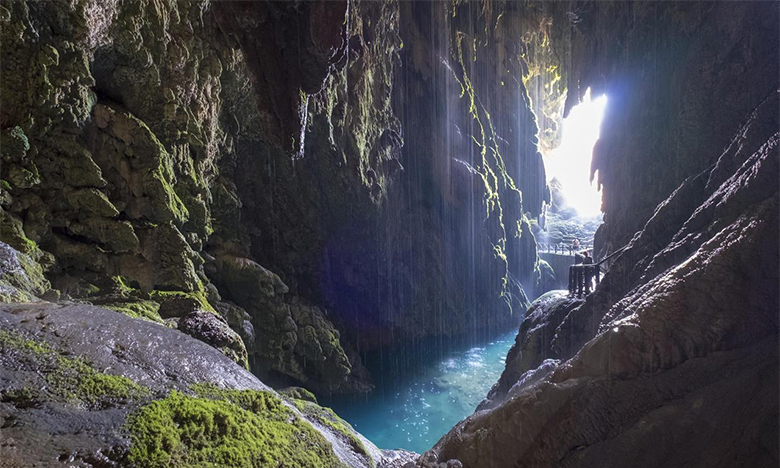The barren, rocky highway twists and turns like a cobra that’s downed a fifth of tequila. This is Nowheresville, Spain, a desert land of sand and sky, shrubs and windmills, sun and more sun. The farther you wind along on the seemingly endless road, the more you begin to question whether this was all a mistake. Surely, you think, no church could be worth such a detour. And then you arrive.
Out of the desert, you emerge into an oasis of trees, waterfalls, gorges and caves, dotted here and there with remnants of 13th-century architecture. Known as El Monasterio de Piedra — the Monastery of Stone, in English — this hidden gem rests roughly halfway between Madrid and Barcelona, and it alone makes driving between the two cities rather than flying or taking the train well worth it.
I encountered the monastery and its breathtaking natural park in 2012, during the return half of a road trip with my father. My co-worker Mariajo Navarro Fernandez recommended it as a “must-see” place that not even many Spaniards know about. With few places to stop between the two major cities, “it’s in a location where not that many people go,” she said. And she’s right — only about 250,000 people visit the monastery each year, compared with, say, the 4.5 million who visited Barcelona’s Sagrada Familia in 2016.
IN 1843, JUAN FEDERICO MUNTADAS TOOK PRIVATE OWNERSHIP OF THE ESTATE AND CREATED … HOTEL ROOMS FROM THE MONKS’ FORMER CHAMBERS.
Nourished by the River Piedra (from which it gets its name), Monasterio de Piedra is a paradise of rustling leaves and trickling water. Spend as much time as you can following the water’s flow; it will lead you around the park in a sort of guided meditation as you are immersed in the interplay of foliage, light and stone. The number and diversity of waterfalls, pools, streams and rapids is astounding. The 50-meter-high, gorge-bordered Cola de Caballo (Horse’s Tail) waterfall instills awe and the Lago Espejo (Mirror Lake) commands stillness, while the cavernous Gruta Iris (Iris Grotto) inspires imagination. These are among the main attractions, but the winding pathways and vistas across gorges and canopies are equally memorable.
The monastery itself is worth a visit as well. A charming example of Gothic and Baroque architecture, the arches and symmetry of the church and cloisters have weathered the sands of time. Given to the monks of the Cistercian order by the king of Aragon at the turn of the 13th century, it was originally a Moorish castle. The monks called it home until the 1800s, when wars drove them out and led to some of the main buildings being damaged. In 1843, Juan Federico Muntadas took private ownership of the estate and created gardens, hotel rooms from the monks’ former chambers and a spa. Today, visitors can spend the night (rooms start at 89 euros, whch includes breakfast and park admission). There’s a pool, two on-site restaurants, a Museum of Wine and a “History of Chocolate” exhibition (the monastery was the first place in Spain to make chocolate). And yes, you can get married here.
It takes about two to three hours to see the monastery and wander through the park — but consider staying longer. Be sure to take the extra steps to reach the top of the Cola de Caballo waterfall; the view of the falls and surrounding gorge is not to be missed.

